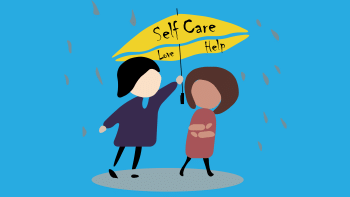Origami is a diverse array of folding techniques, each with its unique vocabulary and looks. Traditional designs include a square piece of paper, precisely folded and creased to create shapes such as animals and plants, geometric patterns, and modular structures. The revered art of wet folding is also employed in some cases, allowing for better manipulation of paper to create more organic and sculptural forms.
This age-old Japanese art of paper folding has fascinated cultures around the world with its simplicity and endless creative potential. While originally from Japan, this craft has been adopted — and adapted — by many, making it one of the most globally influential paper crafts.
Architect Mahamud Hasan Reaz was only thirteen when he started origami. Ridden with the pressures of his studies, he made a paper butterfly sitting in the classroom. "I enjoyed it a lot. Then I made a few more just for fun. I found it worked well for stress relief!"
Reaz started practicing various types of origami in his free time, with the help of YouTube tutorials. He even created a Facebook page for it, calling it "Bhajbinyash", which many people gradually joined, and continued to encourage him, as he made new things.
"My paper crafting journey started as a mechanism to de-stress, but quickly turned into a hobby, and then an addiction," says the young architect.

Reaz would often pick complex crafts, challenging himself. He also enjoyed the adulation and praise that he received from people when he showcased his art.
"Income from a hobby, what could be better than that?" Reaz reminisces how money from his father's flailing business was not enough to support his expensive architecture courses. It was this very hobby that had then become a source of income and a way to cover the cost of his studies.
Today, he is an architect, but he continues to hold on to origami as a way to de-stress. "When I feel overwhelmed with work pressure, I sit down with a piece of paper. Creating makes me happy."
Reaz may have taught origami to himself but there are plenty of people who would love to learn the intricate art from Reaz. "I have conducted several origami workshops, including some for children and underprivileged people, around Dhaka and received a good response."
These include a workshop done with the children in Icchetala, (later discontinued due to COVID-19), a workshop for the hearing impaired in collaboration with Breeze Foundation, and "Sudin Sattva" programme, in collaboration with Sajida Foundation.
"We should spread all the art we practice in society to the best of our ability. I am also trying my best to do this," expresses Reaz.
Origami is very popular worldwide, and enthusiasts of the art feel that Bangladesh is no different. "I don't think there is anyone who has not made a plane or a boat out of paper as a child. This practice is lost while growing up. The popularity of origami among adults is much less, of course."
Reaz feels that this may be because of a lack of institutional education on the subject in our country. However, what gives him hope is that parents are much more receptive nowadays to their children learning newer art forms. Thanks to the internet, anyone can practice origami very easily, pulling up its popularity.
A therapeutic form of expression, origami is a great way to lose oneself in the folds and creases of paper, transcending cultural boundaries, and spreading our wings to the deepest corners of our imaginations.
Let the paper games begin!













Comments